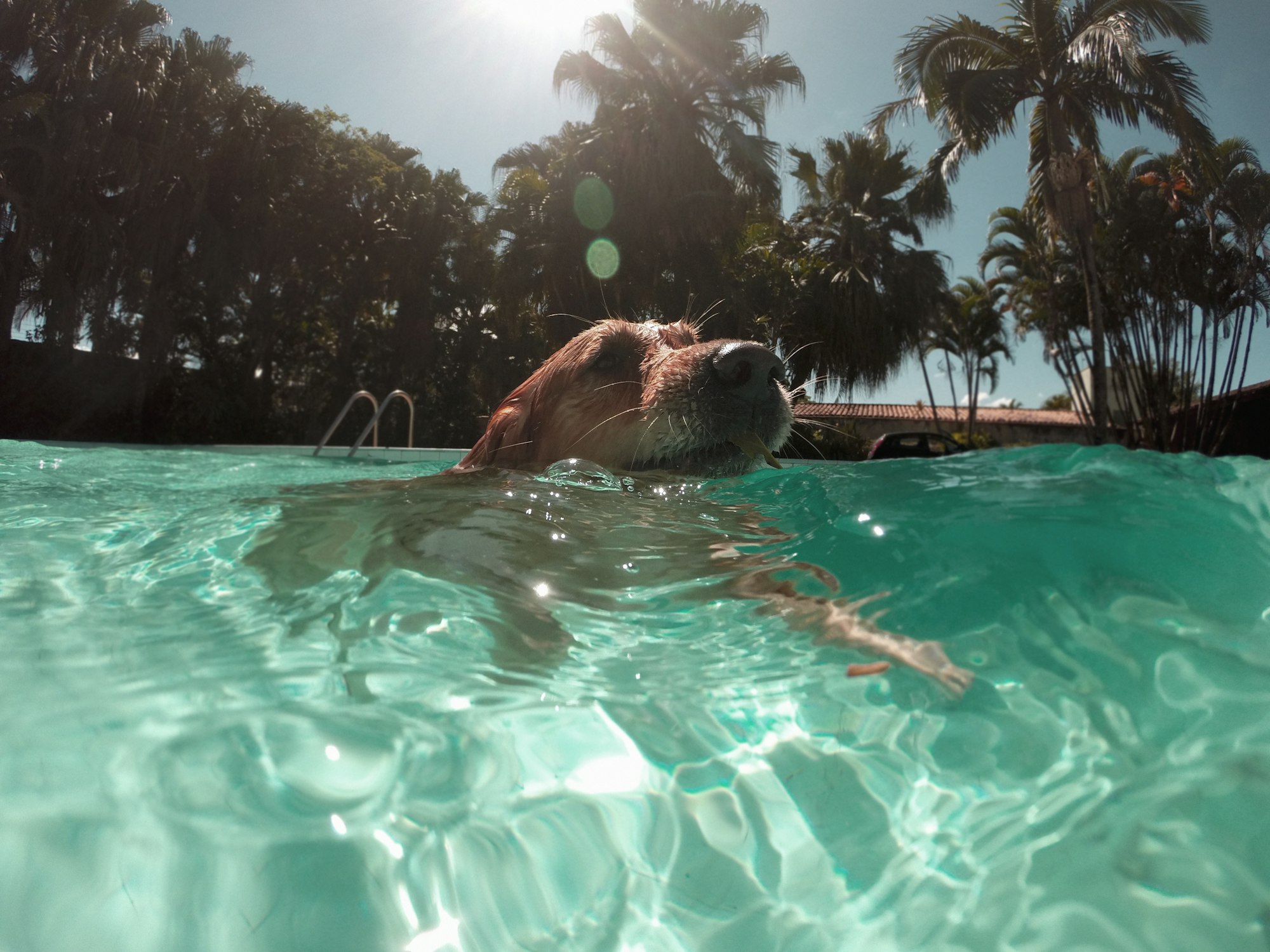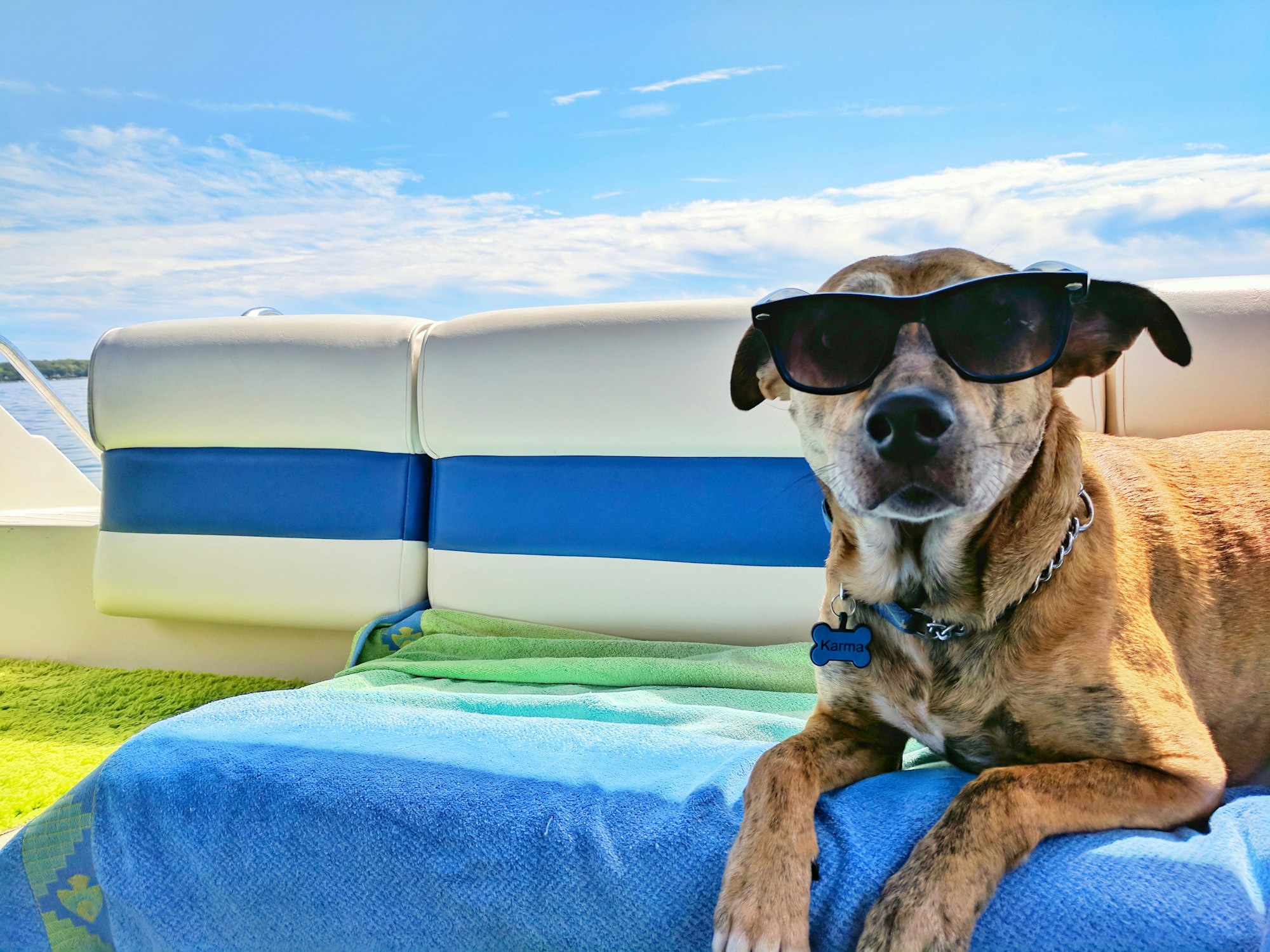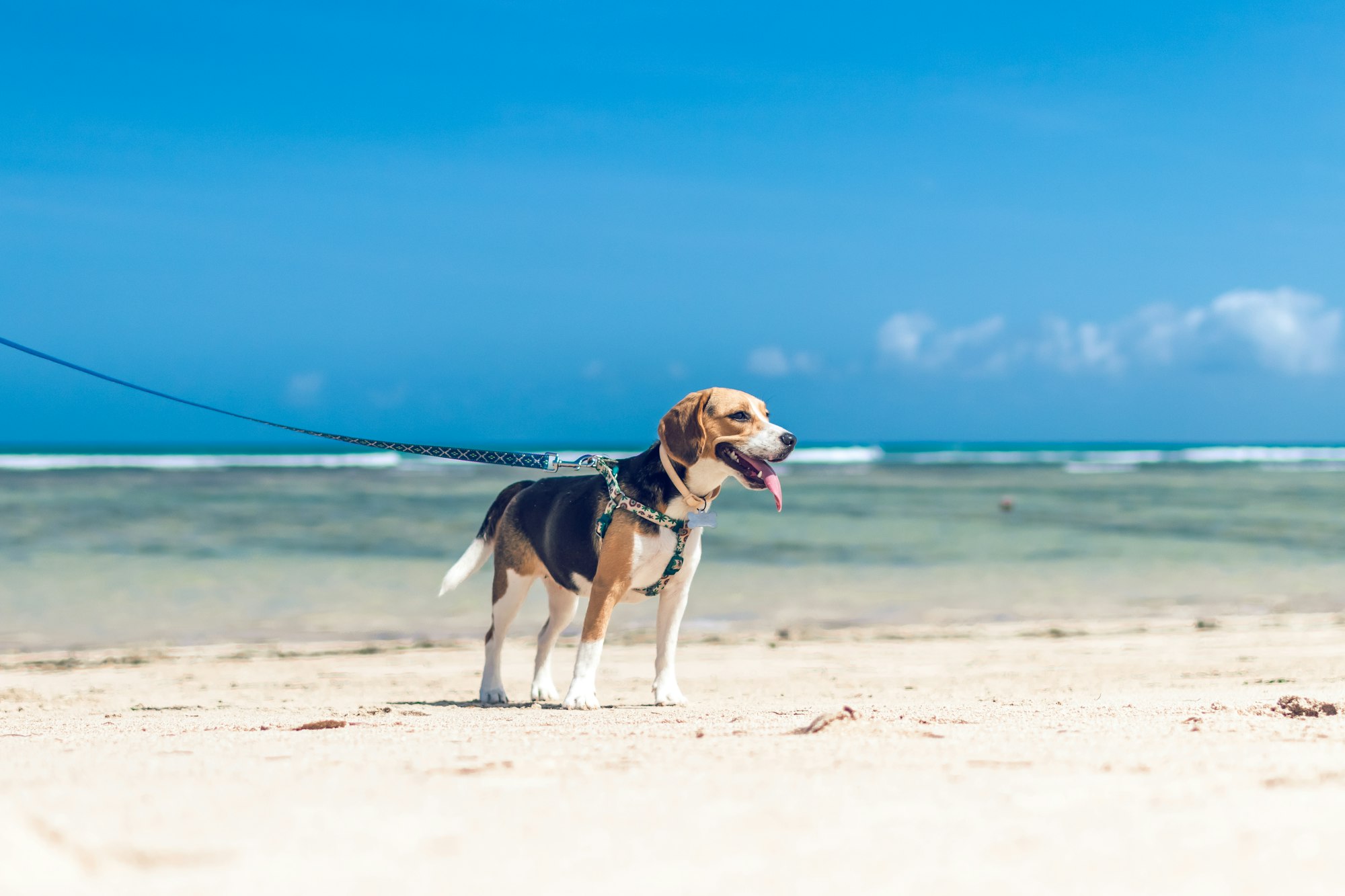The warmer temperatures of summer are an excellent opportunity for you and your dog to get out of the house and enjoy some sun. Most dogs, even the fluffiest ones, are perfectly capable of being active in the heat as long as you take the right precautions.
However, not paying attention to the needs of your canine companion can lead to heat-related issues like dehydration, pad burn, or even heat stroke.
The good news is that you can avoid these issues by taking some simple steps to keep your dog cool in the summer.

The Do’s and Dont’s of Dogs in Summer
Keeping your dog safe and happy in the summer can easily be boiled down to a few simple do’s and dont’s:
Do make sure your dog has enough shade and water
The first step in making sure your dog is ready for summer is to make sure they have enough water and shade.
If you are letting your dog roam around in the back garden, make sure they have plenty of water, supplemented with a few ice cubes and a shaded area with proper ventilation. Try to find somewhere that isn’t a doghouse, as these enclosed spaces can trap heat on a hot day.
Do choose the right time to go for a walk
When the mercury starts to climb, it’s best to delay your walks until the early evening, to start them in the early morning, to avoid the worst of the heat.
Remember, if you’re feeling the heat while you’re out on a walk, your dog is too. You can always turn around, head home, and try again later.
Do check the sidewalk before you leave
While the pads on a dog’s feet are designed to be hard-wearing and robust, they are not shoes. You might not even have thought about how hot the sidewalk gets in the summer, because probably don’t do a lot of roaming around on bare feet.
Before you head out with your dog, lay the back of your hand on the sidewalk, if it’s uncomfortable to touch, then you run the risk of your dog getting pad burn.
Do turn the AC on for your dog
A good rule of thumb is that if it’s hot enough in your house that you would turn on the AC, then turn it on if you’re leaving your dog in there. If you don’t have AC, then crack some secure windows and set up a fan or two to try and keep your dog as cool as possible.
Do make them some icy snacks
We all enjoy an ice cream on a hot day and your dog will too. Making your dog some sub-zero teams is actually quite easy.
All you need to do is freeze some good quality gravy or stock, make some ice cubes with a tasty snack in the middle, or soak some kibble in a little water and freeze it into a Kong toy.

Don’t leave your dog in a car
There is no safe amount of time to leave a dog in a car on a hot day. In direct sunlight, a car can heat up to 102℉ in as little as ten minutes.
Twenty minutes later, it would be up to 120℉. In these conditions, your dog could die in as little as twenty minutes. Hundreds of pets die every year because of being left in hot cars, make sure yours isn’t one of them.
Don’t ignore the humidity
High humidity can impact a dog’s ability to regulate its temperature as it might not because to pant enough to bleed off excess heat.
Don’t neglect your dog’s shots
The beginning of summer is a good time to schedule in a trip to the vets. There’s a good chance that your dog will be spending more time outdoors, increasing their potential to contract diseases or parasites.
Fleas and mosquitos, for instance, hit their highest populations in summer and both are capable of transmitting heart worms to dogs.

What Are the Symptoms of Overheating in Dogs?
The three most common issues encountered by dogs during summer are dehydration, heatstroke, and pad burn. All of these are easier to treat if caught early, so here’s a list of symptoms to look out for:
Symptoms of Dehydration in Dogs
- Sunken eyes
- Lethargy
- Dry mouth
- Depression
- Skin that is slow to snap back when pinched
Dogs can sometimes forgo drinking to spend time playing in the sun. To encourage your dog to drink, make sure there is fresh water available, and try adding a splash of broth or a few chips of ice, depending on what your dog values.
Symptoms of Heatstroke in Dogs
- Rapid breathing and panting
- Excess salivation and thickened saliva
- Fatigue or depression
- Muscle tremors
- Staggering
If you notice any of these symptoms, take your dog indoors, wrap them in cool wet towels and call the vet. Give them access to iced water, but don’t force them to drink. The aim is to get their temperature down to around 103℉ before you stop treatment, but not to chill them too quickly as this can lead to shock.
Symptoms of Pad Burn in Dogs
- Refusing to walk or limping
- Dark or discolored pads
- Excessive licking or biting of feet
- Visible blisters
- Obvious and extreme redness
- Sections of the pads coming away
We always recommend that you check the temperature of the sidewalk before taking your dog for a walk.
If you do notice that your dog seems to have pad burn, you can treat it by immersing your dog’s feet in iced water for up to 15-minutes. Cover the feet with a sock to prevent the dog from licking or chewing the area to prevent infection.
A Safe Summer
Summer should be an amazing time for you and your dog. By following our recommendations, you can be sure that your canine companion will enjoy the sun and heat as much as you do.

